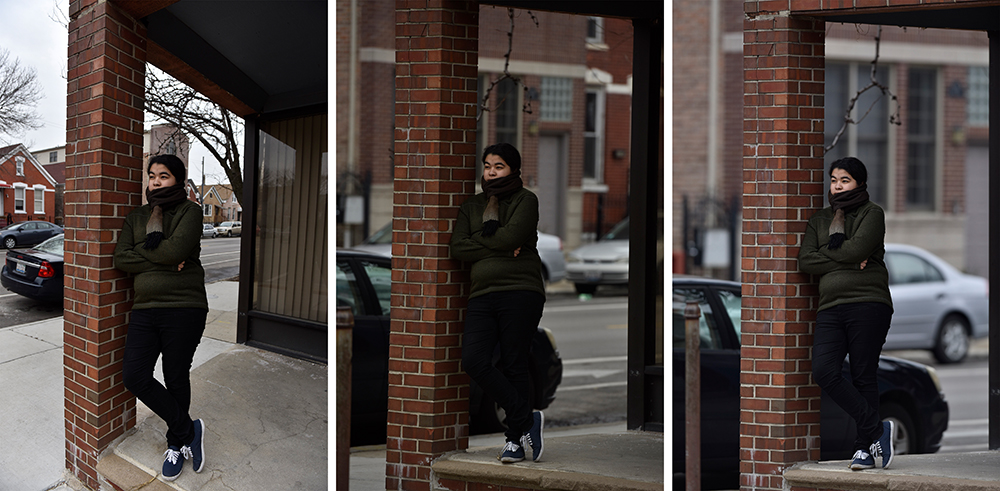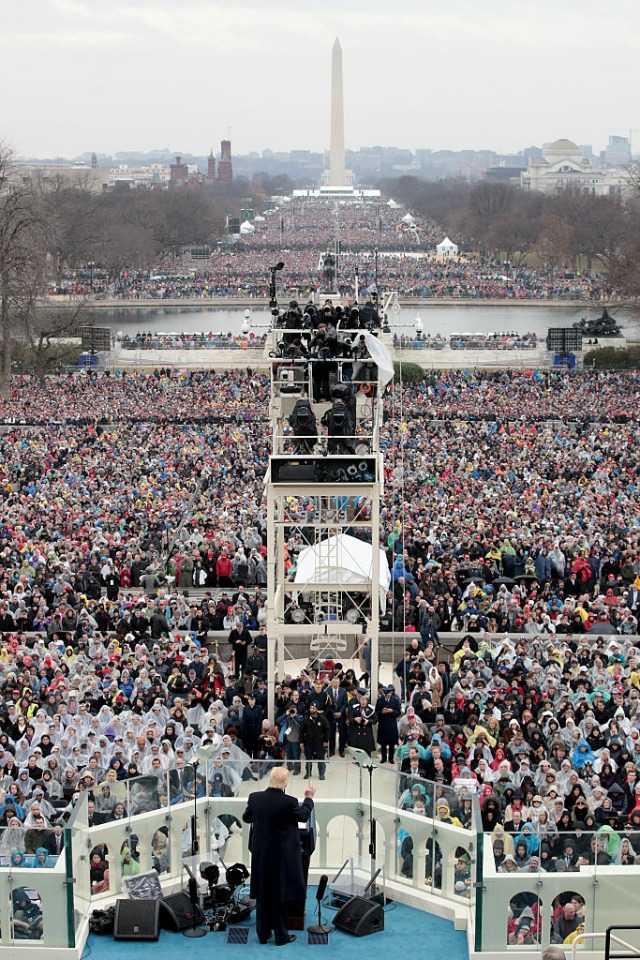This Photography 101 Lesson Puts Your Trump Inauguration Crowd Conspiracies To Rest
By Chicagoist_Guest in News on Jan 23, 2017 7:30PM
By Tyler LaRiviere
While protesters spent Jan. 20 marching through the streets of every major U.S. city and Donald Trump was being inaugurated the 45th President, the question of who brought in a bigger crowd—former President Barack Obama, or Trump?—loomed over the media's coverage of Inauguration Day.
Initially, Reuters showed an aerial shot of Trump's Inauguration with wall to wall people close to the U.S. Capitol Building where the Inauguration took place, but the crowd appeared to putter out as it got further from the capital building and all but disappeared around 12th Street.
Comparison: President Trump and Barack Obama’s #Inauguration crowds #DayOne https://t.co/bmm9G8zOUF pic.twitter.com/i8p4S51QOM
— PBS NewsHour (@NewsHour) January 20, 2017
When this image is compared to Obama’s Inauguration in 2009, the contrast is stark. In response, Some Trump supporters and even White House Press Secretary Sean Spicer claim that these images are deceptive, if not downright manipulated “to minimize the enormous support” that Trump received and claimed that as many as 1.5 million attended the Inaugural. Spicer and supporters also claimed that an image similar to the one taken by Getty Photographer Scott Olson showed the “full extent, support and depth in crowd and intensity that existed” and went on to claim that “this was the largest audience to witness and inauguration. Both in person and around the globe.”

WASHINGTON, DC - JANUARY 20: President Elect Donald Trump arrives on the West Front of the U.S. Capitol on January 20, 2017 in Washington, DC. (Photo by Scott Olson/Getty Images)
When we take a look at Scott’s image (Which isn’t the exact image that Spicer mentioned, but very similar) the crowd is undeniably large and seems to extend far into the Washington Mall. So does this mean Spicer is correct in accusing media outlets of framing images to downplay a number of supporters at Trump’s Inauguration?
The simple answer is that the process of taking a photo (and the advanced physics that come into play here) can mess with our sense of depth, size, and scale. Most photojournalists carry at least two cameras with them, with two separate lenses attached,so they can be prepared for just about any photographic scenario: one wide angle lens usually a 24-70mm and one telephoto lens usually a 70-200mm lens.
These two lenses are great for just about anything, but run into two problems: distortion on the wide-angle side, and lens compression on the telephoto end.
Distortion, or the more specific term Barrel Distortion, is commonly seen in wide-angle lenses and happens when the field if the view is larger than the image sensor, making it so the subject matter is crammed into the image plane. This distortion is seen more prominently at the edges of the photograph, where straight lines appear to curve, subjects appear to be wider and distances appear to be greater.

The crowd at the Van’s Warped Tour in Tinley Park. This is an example of Barrel Distortion where the crowd seems to be wider and go back further than it really does. The photo was taken with a 15mm lens. (Tyler LaRiviere/Chicagoist)
This distortion can be seen more prominently in photos of a single person in a cramped environment. When shooting at a low angle, the person’s feet appear massive while their head seems to be disproportionately tiny.

This image was shot a lower angle in a cramped CTA train. The distortion can be clearly seen with the man on the left who’s right leg and foot seem disproportionality larger than the rest of his body. (Tyler LaRiviere/Chicagoist)
Lens Compression happens when background elements appear larger than they really are, thus fooling our brain into thinking they are closer than they really are based on our concepts of perspective.
 Perspective: These three images were taken with three different lenses while trying to keep the woman framed the same. The left image was taken at 24mm, the center image was taken at 200mm and the right image was taken at 300mm. If you look at the background objects they grow bigger as the focal length increases. (Tyler LaRiviere/Chicagoist)
Perspective: These three images were taken with three different lenses while trying to keep the woman framed the same. The left image was taken at 24mm, the center image was taken at 200mm and the right image was taken at 300mm. If you look at the background objects they grow bigger as the focal length increases. (Tyler LaRiviere/Chicagoist)
Lens Compression can happen at any focal length, but is more prevalent at higher focal lengths. For example, you’ll have higher lens compression at 70mm vs. 24mm, but even more at 200mm vs. 70mm.
So how does this all relate to crowd sizes at the Trump Inauguration? When we take a look at the landscape image taken by Olson (above), we see minor distortion around the edges. It’s obvious that it was taken with a wide-angle lens. Olson confirmed this to Chicagoist that this image was taken at 24mm. In contrast, when looking at a portrait-style image also taken by Olson (below), we see that the crowd appears almost at the base of the Washington monument based on our perceived perspective of distance (this perspective makes us reason that the Washington Monument looks bigger, so it must be closer). But that’s lens compression at work—compressing the background and making background objects appear bigger than they truly were. Olson also confirmed that this image was taken at 70mm.

WASHINGTON, DC - JANUARY 20: President Donald Trump delivers his inaugural address on the West Front of the U.S. Capitol on January 20, 2017 in Washington, DC. (Photo by Scott Olson/Getty Images)
So does using this equipment with the understanding that there’s perspective distortion mean that the media is being dishonest? The simple answer is no. The reality, is no matter what photographic equipment the media uses, perspective distortions will be a reality. It’s a limitation on the equipment more so than a conspiracy to deceive the masses.